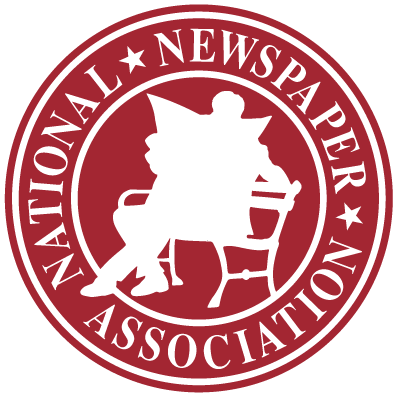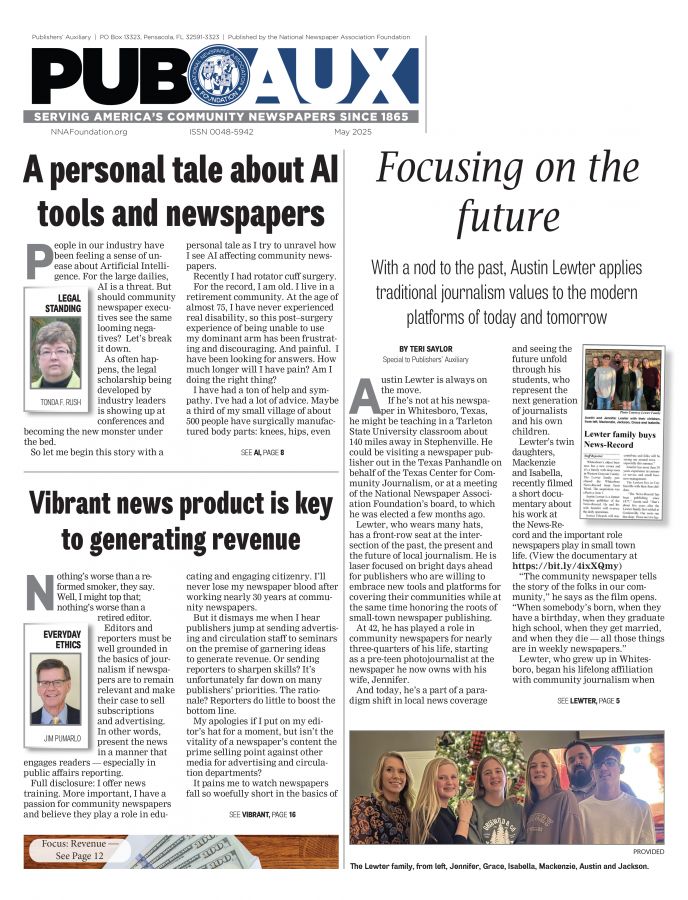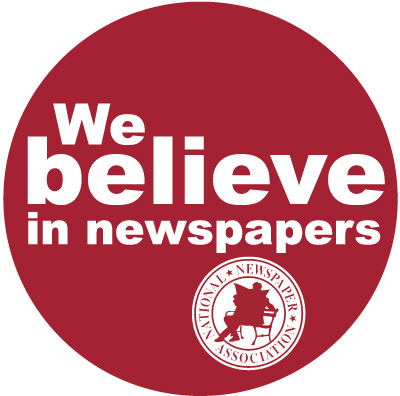Delivery problems will be monitored at two weeklies
Sep 8, 2015
By Tonda F. Rush
CEO and General Counsel | NNA
The National Newspaper Association Postal Committee in August wrapped up a summer-long project with the U.S. Postal Service to examine and diagnose problems in newspaper delivery that have arisen since the much-publicized shrinkage of the mail processing network began. Under the umbrella of a “Kaizen” project, a Japanese term that denotes continuous improvement, USPS selected four newspapers recommended by NNA for close examination.
Kaizen was originally a manufacturing term used to eliminate waste and maximize efficiency. USPS uses the concept along with its Lean Six Sigma processes to find problems and develop solutions in its distribution network.
Two NNA-member newspapers—the Brunswick Beacon in Shallotte, NC, and the Farmland News in Archbold, OH—were reviewed by USPS headquarters. Other NNA newspapers have gone through the Kaizen process of “value-stream mapping” from origin post office thru SCF or Hub and ADC plants conducted in USPS regions.
The lessons learned were multiple, said NNA Postal Committee Chair Max Heath, and his colleague on the Mailers Technical Advisory Committee, Brad Hill, president of Interlink Inc. The Interlink software was in place in both national Kaizen projects.
Lessons learned
• Newspaper preparation that does not streamline bundle and containers to reach their destinations with least possible handling in mail plants may miss critical truck departures and that can slow the mail by a day or more.
• Labels and mail preparation are important. Missed signals on containers or bundles could cause newspaper copies to be put into the wrong bundle or container and wind up in the wrong post office or plant.
• Newspapers that arrive at a sorting plant late at night may be laid aside for a day because the plant is beginning work on First-Class Mail that has the highest service standards.
• Although newspaper operations and local post offices may prefer small bundles, the copies going through mail processing plants may be better served by larger bundles, so software settings and rules may need to be changed to streamline preparation.
• Postal personnel may be missing opportunities to move newspapers quickly from one plant to the other because trucks look full, but mail has not necessarily been consolidated in the truck so the newspapers can fit in, or given Periodicals priority.
One overriding message to the NNA postal delegation is that solutions can be complex. They may be in different software settings, better use of containers, different bundle sizes or other tools newspapers can control. They may also be in operations that only USPS controls, like the timing of a truck departure or the use of space in the containers filling a truck.
“It was very useful for me to see this process from end to end,” Hill commented. “I can see, for example, how critical steps from beginning to end can change the time it takes to move the newspapers along.”
Heath said he was absorbing lessons learned for use in the NNA Postal Hotline. One conundrum is that printing plants sometimes have preferences for local handling that do not work well in the postal network. He also noted that USPS rules sometimes cause newspapers to prepare bundles and containers in ways that slow them down.
“We’ve already identified one rule from this process that is in our way, and we’ve begun right away to seek a change. It requires newspapers to make up sacks with no fewer than 24 pieces to an Area Distribution Center, but that robs us of the most direct route on ‘residual’ copies. We can’t change the processing network much, but we can change that rule so smaller containers can move faster, and I’m hopeful that NNA will be able to get that accomplished pretty quickly,” he said.
The Kaizens grew out of NNA requests beginning in 2012 for USPS to examine the multiplying problems in newspaper mail processing. As plants have closed and greater distances are involved in mail transportation, complaints from newspaper subscribers have grown geometrically. Heath says the Postal Hotline activity has reflected the complexity in getting newspapers to subscribers on time.
“The value of this Kaizen process to me has been spotlighting which questions need to be asked. A breakdown can occur in multiple spots along the path to delivery. Sometimes we can fix them and sometimes USPS can fix them. We knew where most of them were, but simple things like getting USPS plant people to put Periodicals on a truck that may look full of First-Class Mail but isn’t really full is something we will now watch for. In today’s USPS, the growing package business is going to present new problems for us, because it is already clear that packages can fill up a truck and even push First-Class Mail out. We will need to keep an eye open that Periodicals are not bumped as well,” he said.
Hill said a challenge for mailing software providers is to make sure the newspaper has maximum flexibility in mail makeup while remaining sensitive to both the postal rules and the needs of the USPS processing network are followed.
“Little tweaks can produce big results,” he said. “We always knew that, but the Kaizen examination has highlighted how important, and sometimes necessary, that can be.”
At both newspapers, improved mail delivery is expected as the printers and USPS have made changes to get the mail to their destination more quickly. For the rest of the industry, increased training and ongoing communication with USPS will be the answer, Heath said.







